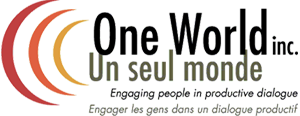Is Your Public Engagement Benefitting from Good Process Design?
 Wendy Graham of the University of Aberdeen says, “Researchers are from Venus, policy makers from Mars. Communicators are possibly from Pluto.” It can certainly seem as though we all come from different planets, and the goal of public engagement is to bring these languages together and hopefully develop some sort of Rosetta Stone of understanding. To ensure this happens effectively and meaningfully, considering the overall process design is crucial. An informed and well crafted process design gives both experts and “non-specialists” the opportunity to engage in dialogue and learn from one another.
Wendy Graham of the University of Aberdeen says, “Researchers are from Venus, policy makers from Mars. Communicators are possibly from Pluto.” It can certainly seem as though we all come from different planets, and the goal of public engagement is to bring these languages together and hopefully develop some sort of Rosetta Stone of understanding. To ensure this happens effectively and meaningfully, considering the overall process design is crucial. An informed and well crafted process design gives both experts and “non-specialists” the opportunity to engage in dialogue and learn from one another.
The process design will look very different from engagement to engagement depending on the nature of the project, the type of research you need to do, and the communities you need to involve. As I explain in this video, there are three factors that you really want to think about in terms of process design:
Some Decisions that Inform Process Design:
- Depth or breadth. Do you need to work with a small group who meets over time or for an extended length of time to really dive into an issue or, will a one-off online type of engagement that engages more people get you what is needed?
- Level of intensity. How intense is the discussion? How complex is the issue?
- Policy to action continuum. What is the goal? Are you trying to input citizens’ values and perspectives into policy or are you trying to do social mobilization? It is not always either/or, but rather the answer can lie somewhere along this continuum.
(Note: In the video, you can see some examples of how these considerations inform process design.)
Process design is very creative, and we must use our experience and, of course, the goals and needs of the client to determine the best way to approach and engage the public. Each engagement builds on and further clarifies best practices, approaches, and techniques. An increasingly important component of public engagement is evaluation because it allows us to ask: Did this work? Did this provide value to the client and community? What specifically worked well? What did not? How can we improve?
An evaluation framework can help clarify objecties and, hence, design. We have to keep these questions in mind:
- What is public engagement helping you to achieve?
- How do we actually think change happens through public engagement?
Public engagement processes require developmental evaluation; we have to determine the success or progress of processes “where there is a lot of uncertainty and ‘moving goalposts.” We must evaluate an emerging process from the time it starts and as it continues to unfold. There are various factors we can look at from community participation to the nature and scope of the discussion to future issues. It’s a cycle that we use to benefit the client and help them achieve their intended goal with public engagement.
Researchers may be from Venus and policy-makers from Mars but they need a way to reach the Earthlings and engage them in high-quality public discourse. Process design is critical in this goal.
